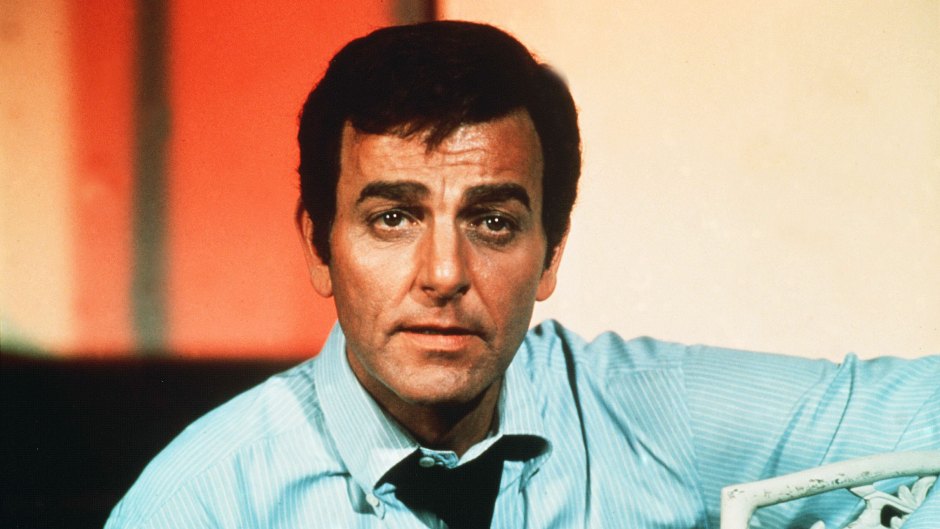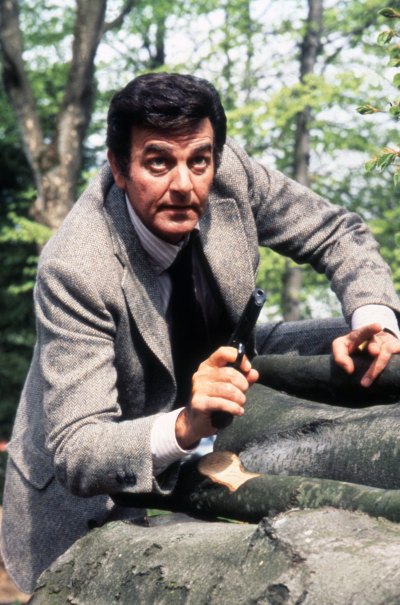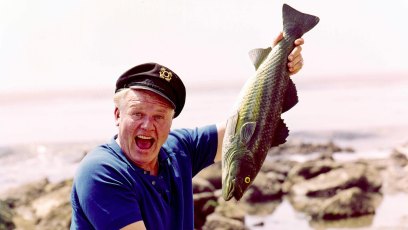
Desilu/Norway/Paramount Tv/Kobal/Shutterstock
Here’s What Happened to ‘Mannix’ Star Mike Connors Before, During and After the Classic Detective Show
One has to wonder if actor Mike Connors had gone through something of an identity crisis by the time he got to Classic TV show Mannix. He was born Krekor Ohanian, in high school was given the nick-name “Touch” due to his skill on the basketball court, was told by his first agent to change his professional name to Touch Connors and then, finally, assigned himself the first name of Mike. And all of this before he took on the onscreen persona of detective Joe Mannix.
In 1952, The Fresno Bee described his early journey this way: “Krekor Ohanian found his ability to play basketball helped him land one of the leading roles in a new Hollywood motion picture. The former Fresno High School student, who made a name for himself as a court star in the institution, went to the University of California in Los Angeles to study law and also to engage in his favorite sport.” It was while doing so that he was discovered by agent Harry Willson, who suggested the name change, commenting, “It will be good for publicity. Like, ‘He’ll Touch the Top.’”
Needless to say, “Touch” didn’t do so. But Mannix (currently airing on the MeTV network) did, enjoying an eight-season run from 1967 to 1975 after being given the green light by Lucille Ball and Desilu productions (at around the same time she approved both Star Trek and Mission: Impossible — more reasons we love Lucy).

“I had read a million detective teleplays,” Mike told the Independent Star-News prior to the show’s premiere, “but Mannix was more than just another super-sleuth story. Joe Mannix was real. He bled. He perspired. He should have been born 50 years earlier. He was not pretty. Sometimes he was vicious. He was governed by his own rules.”
He was particularly impressed by the environment in which Mannix was placed; a pure individual employed in the first season by an ultra-modern detective organization known as Intertect, where everybody dressed the same and computers did 50 percent of the leg work. “He stood out like a sore thumb,” said Mike, “but he was accepted only because he happened to be a darned good investigator. I respected this man. And I think the audience will, too. I respected the premise of the series. And I respected its creator, Bruce Geller, for what he had done with Mission: Impossible. Geller is a behind-the-scenes Mannix. He did not give an inch, aesthetically, on Mission and he attacked Mannix with the same imaginative flair for realism and drama. That’s why I’m in the homicide business.”
Please scroll down for much more on Mike Connors.

RKO Pictures

Columbia Pictures

Palo Alto Prods/Kobal/Shutterstock

NBCUniversal

Sony Pictures Television

ANL/Shutterstock

ANL/Shutterstock

NBCUniversal

ANL/Shutterstock

A Yankee Production

Columba Pictures

Desilu/Norway/Paramount Tv/Kobal/Shutterstock

Globe Photos/Shutterstock

Desilu/Norway/Paramount Tv/Kobal/Shutterstock

CBS Television Distribution

CBS Television Distribution

Desilu/Norway/Paramount Tv/Kobal/Shutterstock

CBS Television Distribution

Desilu Too, LLC

Desilu Too, LLC

Araldo Di Crollalanza/Shutterstock

ITV/Shutterstock

CBS Television Distribution

Globe Photos/Shutterstock

Bei/Shutterstock

Alan Berliner/BEI/Shutterstock

Peter Brooker/Shutterstock

Jim Smeal/BEI/Shutterstock







































